Book Box: Novel approaches
Sign up now: Get ST's newsletters delivered to your inbox
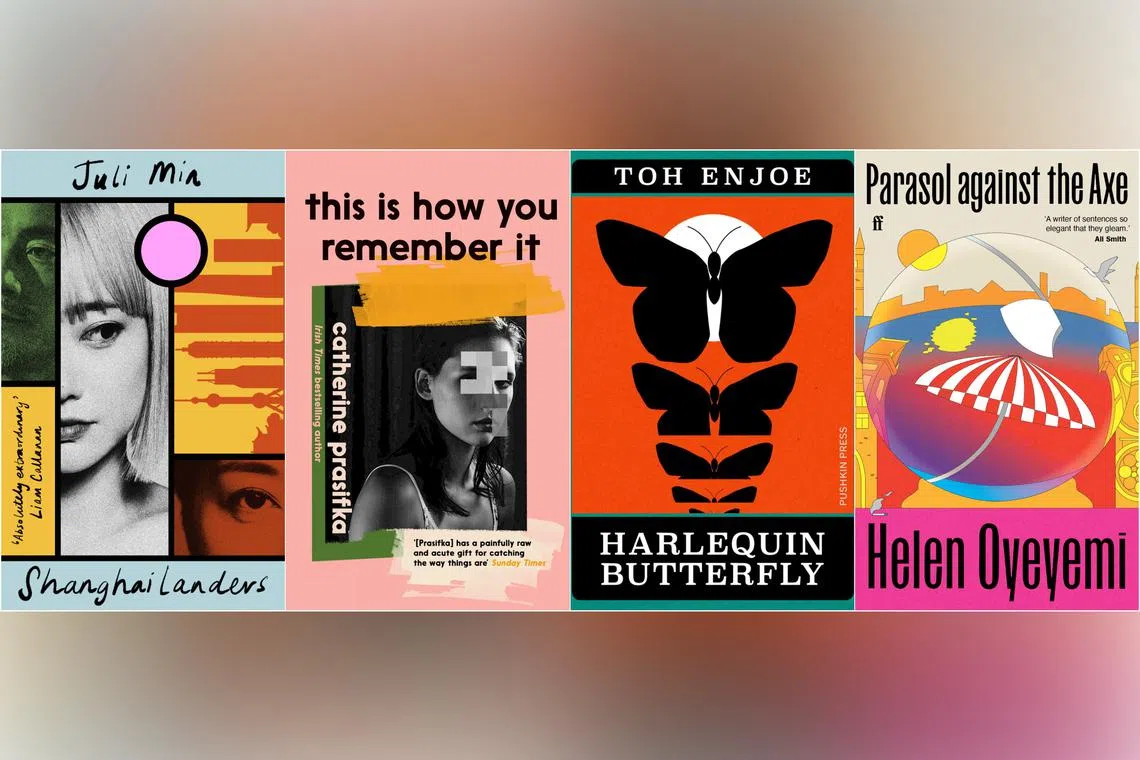
In this week’s Book Box, The Straits Times looks at four books that engage in experiments to give the novel new relevance.
PHOTOS: DIALOGUE BOOKS, CANONGATE BOOKS, PUSHKIN PRESS, FABER & FABER
Follow topic:
SINGAPORE – In this week’s Book Box, The Straits Times looks at four books that engage in experiments to give the novel new relevance. Buy the books at Amazon
Juli Min explores family, identity and love in debut novel Shanghailanders

Korean-American author Juli Min chronicles the life of a family in Shanghai, told in reverse chronological order.
PHOTOS: DIALOGUE BOOKS, SHEN WU
Korean-American author Juli Min, 36, explores a form of Asian identity different from her own in her debut novel Shanghailanders.
Born in Seoul, South Korea, and raised in New Jersey in the United States, she has focused her 288-page novel on the experiences of a mixed family of five living in Shanghai, China. While her protagonist Leo Yang is Chinese, his wife Eko is Japanese-French and their three daughters speak Mandarin and French.
Min tells The Straits Times via a Zoom call from Shanghai where she is based: “These girls don’t have an identity crisis like most immigrant stories about intergenerational conflict or trauma. These girls feel fully Shanghainese. It’s their home, where they grew up. They’re Asians living in this city and country where they look like the majority. They have a confidence that comes from that, and they’re also beautiful, loved and come from extreme privilege.”
Book review: This Is How You Remember It is a resonant portrait of a life lived online
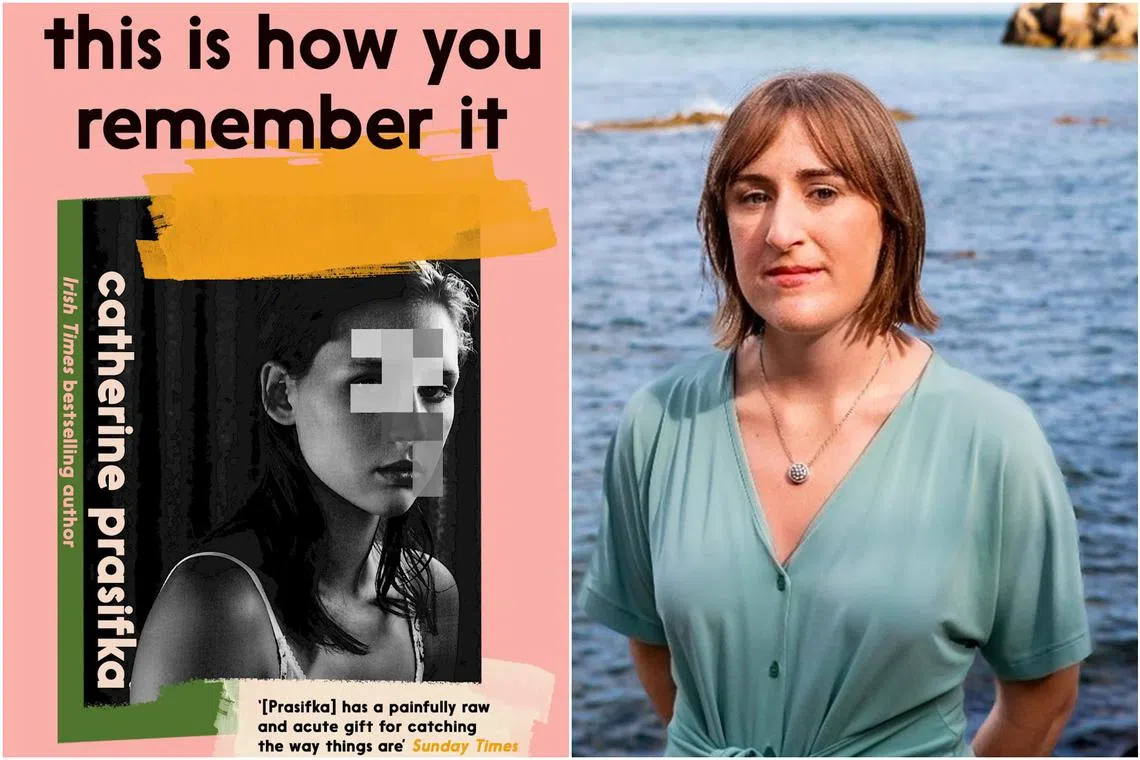
This Is How You Remember It by Catherine Prasifka.
PHOTOS: CANONGATE BOOKS, CATHERINE PRASIFKA/LINKEDIN
To be “chronically online”, as a new generation of digital natives knows, is to inhabit a different world. It means being fluent in internet slang. It entails frequent summonses to the court of public opinion, usually convened in the comment section of a Facebook post or X (formerly Twitter) thread. It is adolescence with a pink-hued, low-contrast Instagram filter slapped on.
And it usually starts with an early, innocuous brush with technology. In Irish novelist Catherine Prasifka’s sophomore novel, This Is How You Remember It, a young girl gets a video camera, and, “enthralled” by how she sees herself through its lens, uses it to document a fun day at the beach.
Soon, she trades it for a computer, then a flip phone, then a smartphone. She makes friends she will never meet, builds worlds she can access only through a screen.
Indeed, this is how many people who grew up around the turn of the millennium will remember it. Prasifka’s novel is eerily familiar, and deliberately so. It is narrated in the second person, so when “you” are creating an account on a virtual pet website or browsing images the protagonist should not be looking at, you, the reader, are forced to confront those long-buried teenage memories.
Book review: Toh Enjoe’s Harlequin Butterfly plays with words and logic for a surreal read
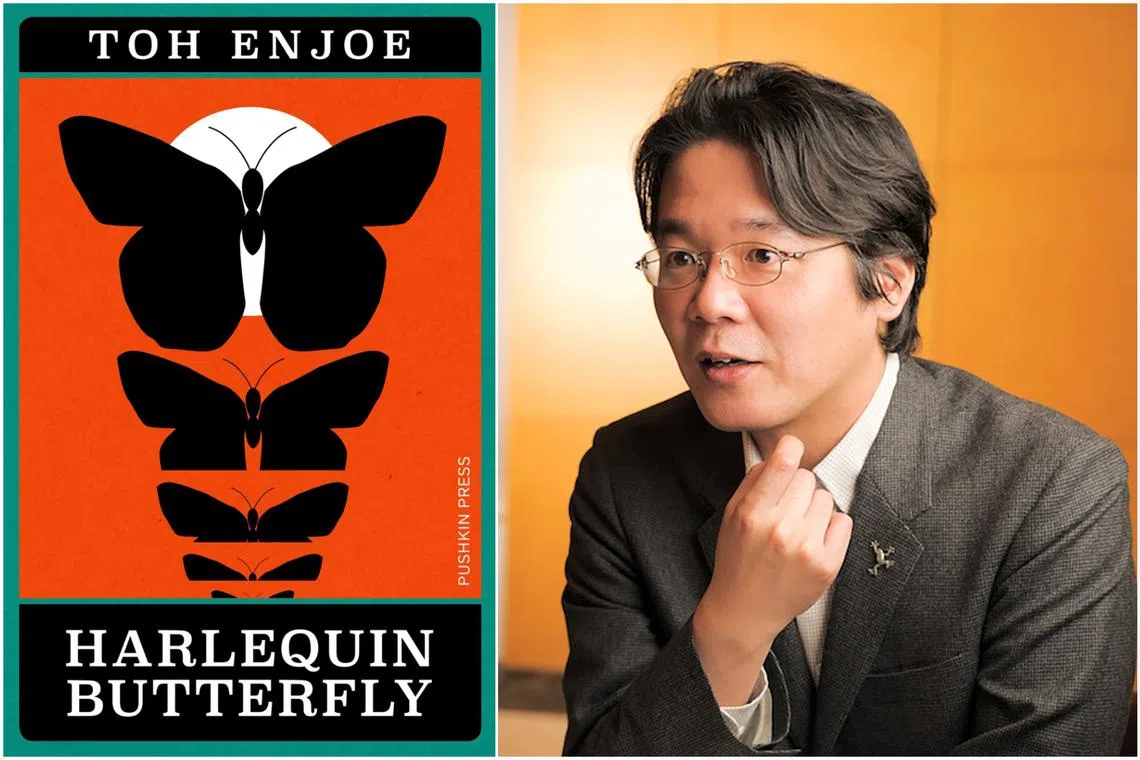
Harlequin Butterfly by Toh Enjoe thrives on unanswered questions within shifting realities.
PHOTO: PUSHKIN PRESS, KODANSHA
What about a book that can be read only when travelling? This is how Toh Enjoe’s enigmatic novella Harlequin Butterfly – a surreal, disorienting trip – starts.
In a book market saturated with dross, a reader instinctively determines that this question must be self-referential – perhaps a self-conscious jibe at Harlequin Butterfly’s own small volume.
But it turns out to be the musings of an unnamed passenger on a flight. Told to his larger-than-life seat neighbour, entrepreneur A.A. Abrams – a corpulent man who “waits for the layers of his fat to settle into place” – the question evolves to become a breakthrough title, To Be Read Only On An Airplane.
Abrams, emphatically not a book lover, has turned this stray idea into mountains of cash. He is aided, he believes, by a talismanic small silver butterfly net he keeps in his pocket that helps him capture floating ideas for his next big invention.
Book review: Parasol Against The Axe’s magic realism makes for alienating read
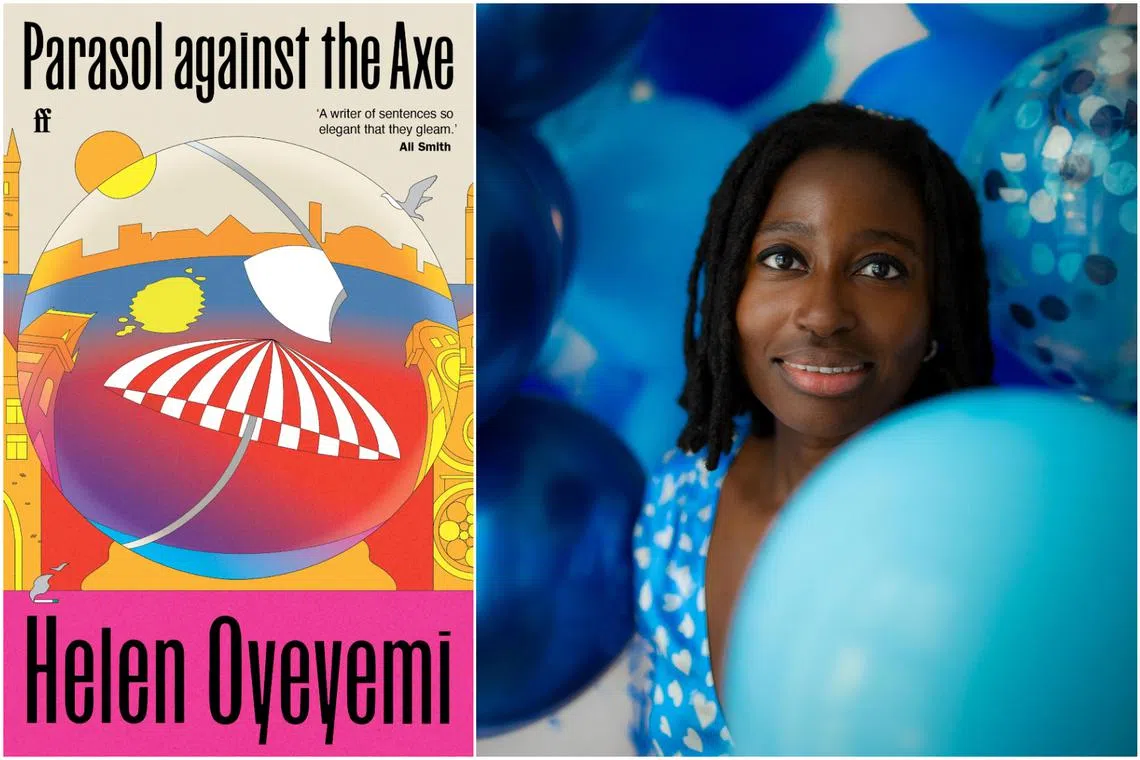
Parasol Against The Axe by Helen Oyeyemi is the author's first book set in Prague, Czech Republic, despite having lived there for over a decade.
PHOTOS: FABER & FABER, KATERINA JANISOVA
The latest novel by acclaimed British-Nigerian author Helen Oyeyemi, Parasol Against The Axe, is a love letter to Prague written in the genre of magical realism. It is the first of her books to be set in the city, although she has been based there since 2013.
Born in Ibadan, Nigeria, Oyeyemi rose to prominence after writing her first book, The Icarus Girl (2005), while studying for her A levels. She often infuses elements of magic and horror into her books, retelling European fairy tales such as Snow White.
The protagonists of Parasol Against The Axe, whose perspectives alternate within the book, are Hero Tojosoa and Dorothea Gilmartin. Physical descriptions of Hero as “six feet tall in socks, inhabiting this stature fully and with lightness”, while Thea is “neither tall nor petite, she fits in wherever there’s room for the average”, are merely the beginning of their differences. And it is difficult to pinpoint what exactly leads them to be friends and later fall out.
Later chapters reveal what seems to be a convoluted plot about revenge, but one cannot be sure as Thea repeatedly meets a woman dressed as a mole while Hero inexplicably marries a stranger who may also be a golem.
The Straits Times’ Weekly Bestsellers June 22
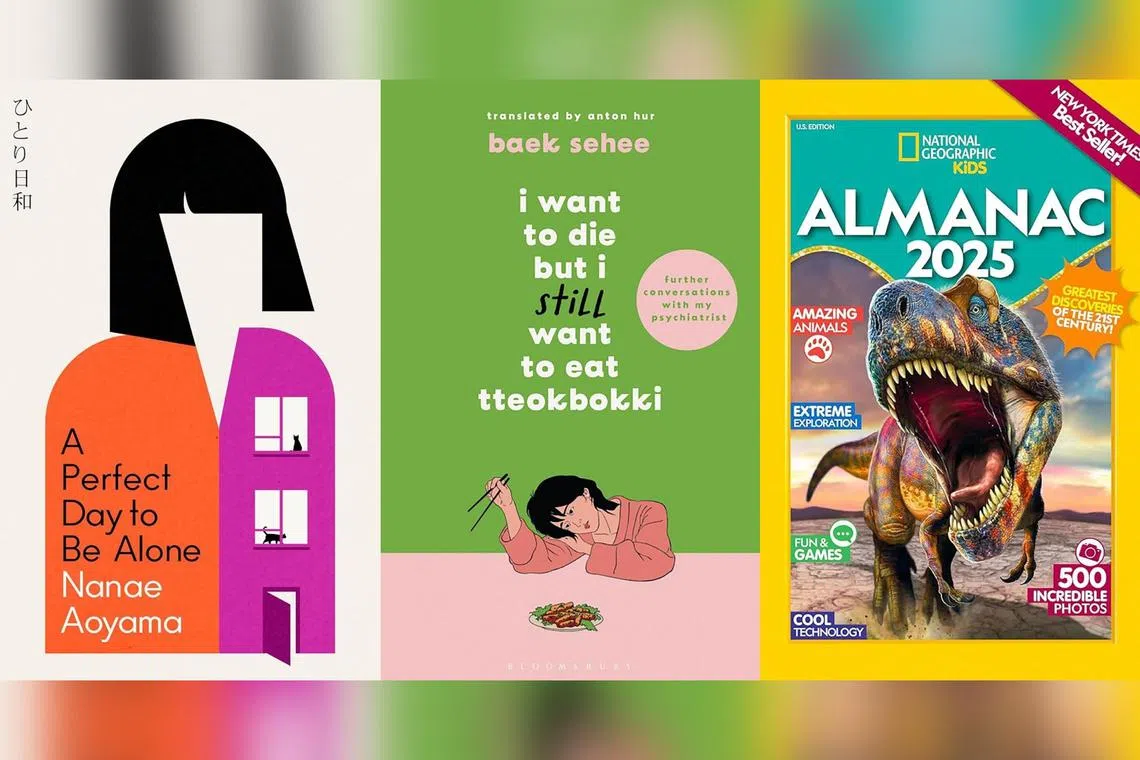
PHOTO: HACHETTE UK, BLOOMSBURY PUBLISHING, NATIONAL GEOGRAPHIC
A Perfect Day To Be Alone by Nanae Aoyama hits No. 1 on the fiction bestsellers list.
This article contains affiliate links. If you buy through these links, we may earn a small commission.

